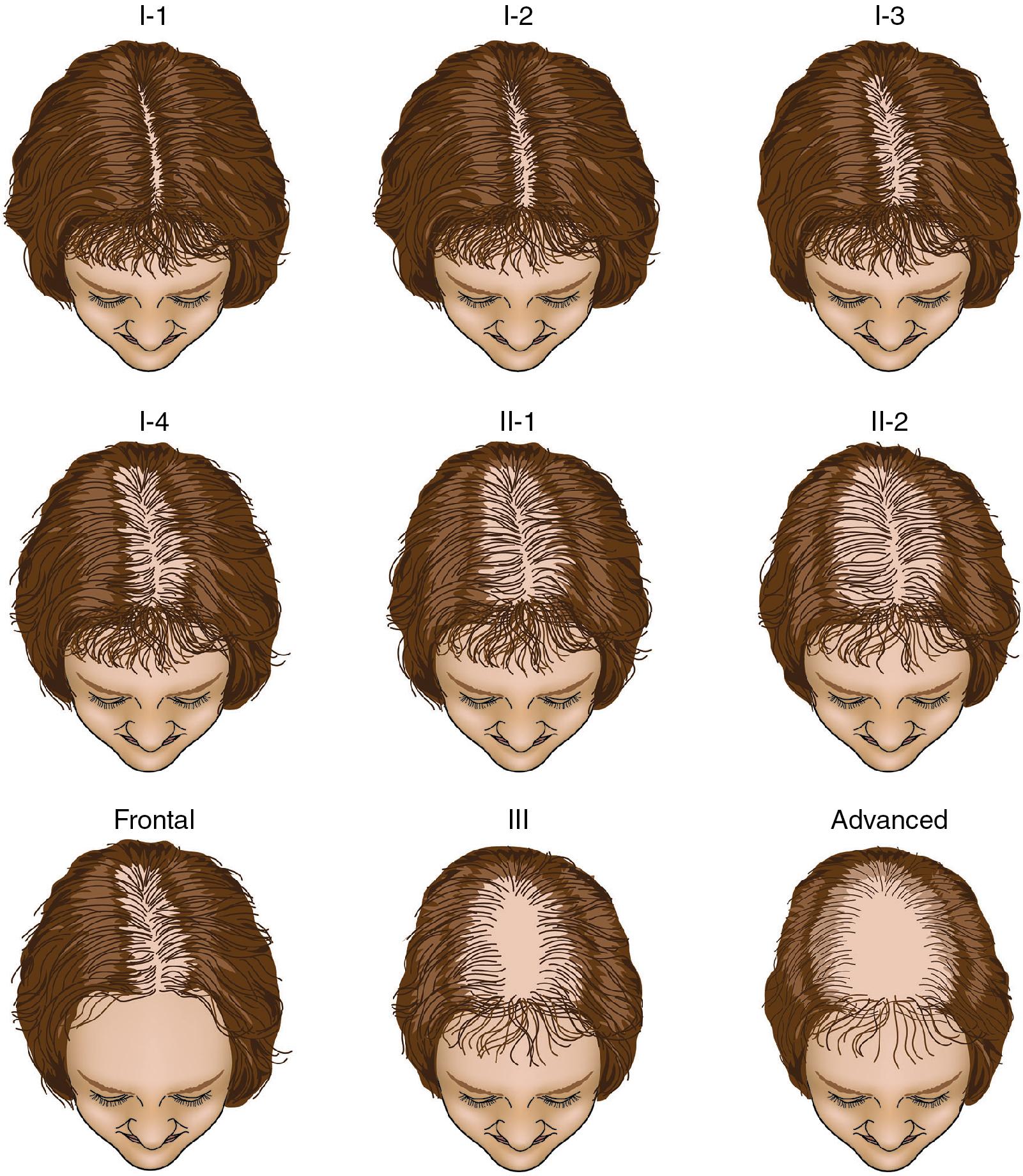Physical Address
304 North Cardinal St.
Dorchester Center, MA 02124
Several laser and light-based therapies, including low-level laser/light therapy, excimer laser, monochromatic excimer light, narrowband ultraviolet B phototherapy, and fractional laser, have been studied for the treatment of androgenetic alopecia. Most research has focused on low-level laser/light therapy, also known as photobiomodulation. Evidence for other energy-based modalities is limited.
There are a variety of low-level laser/light therapy devices cleared by the U.S. Food and Drug Administration that are available for home use, including combs, bands, caps, and helmets, as well as hoods for in-office use. Current evidence suggests that low-level laser/light therapy is safe and effective for the treatment of mild to moderate androgenetic alopecia in men and women, Fitzpatrick skin types I to IV.
Less frequent treatments and shorter total weekly treatment duration (<60 minutes per week) may lead to improved hair growth compared with more frequent use and longer treatment times. In general, devices are used two to four times per week, with individual treatment session durations ranging from 90 seconds to 35 minutes. Recommended treatment protocols vary based on the particular technology, wavelength, and specific manufacturer.
The efficacy of laser and light treatments may be increased when used in combination with other therapies such as topical minoxidil. Additional research is needed to better understand the most effective treatment techniques and to identify ideal treatment candidates.
Hair loss affects a significant proportion of the population. The most common type of hair loss is androgenetic alopecia (AGA), a nonscarring alopecia that affects at least 50% of males 40 years and older and 75% of females 65 years and older. The extent of hair loss as a result of AGA is generally less in women than in men. , Other forms of nonscarring alopecia include alopecia areata (AA) and telogen effluvium (TE), and these are distinguished from scarring alopecias by preservation of the hair follicles and potential for hair regrowth. Certain infections (e.g., tinea capitis), medications, hormonal imbalances, hair styling techniques, genetic conditions, and anxiety or stress can also lead to hair loss, and some treatment overlap exists between AGA and other causes of alopecia. The objective of this chapter is to discuss the efficacy and safety of laser and light devices for the treatment of alopecia, with a focus on AGA.
AGA is driven by increased activity of androgen hormones, leading to a shorter anagen (growth) phase and follicular miniaturization (see Fig. 4.1 ). Men with AGA experience a gradual thinning of hair on the crown and frontal scalp, while females tend to experience thinning along the central part-line. There are various scales that are available to grade the severity of AGA, commonly the Norwood-Hamilton scale (see Fig. 12.1 ) for male-pattern hair loss (MPHL) and the Savin ( Fig. 15.1 ) and Sinclair scales (see Fig. 12.2 ) for female-pattern hair loss (FPHL).

Numerous treatment modalities are used for AGA, including topical therapies, oral medications and supplements, injections, laser and light devices, and surgical interventions. Currently, the only U.S Food and Drug Administration (FDA)-approved treatments for AGA are oral finasteride and topical minoxidil (Rogaine) (level of evidence: 1a) ( Pearl 15.1 ).
At present, the only U.S. Food and Drug Administration–approved treatments for androgenetic alopecia are topical minoxidil and oral finasteride, and these are typically first line. Energy-based modalities such as low-level laser/light therapy are usually considered alternative or adjunctive treatments, especially in patients who are interested in avoiding surgical measures.
Note that “clearance” merely confirms that devices are found to be substantially equivalent to approved “predicate” devices through the FDA Premarket Notification 510(k) process and does not denote “approval,” which requires a device be found to be safe and effective through the FDA’s Premarket Approval (PMA) application or Humanitarian Device Exemption (HDE) pathway. Further, representing a device as officially FDA-approved when it is only cleared is considered misleading and constitutes misbranding (21 CFR 807.97), which is a prohibited act under 21 U.S.C. 331(b). , Because LLLT devices are both medical devices and electronic radiation-emitting products, these devices must comply with two independent sets of regulations: medical device regulations and radiation safety regulations. ,
Several laser and light-based interventions have been used to treat alopecia in clinical and experimental studies. These include LLLT (level of evidence: 1a), excimer laser (level of evidence: 1a), monochromatic excimer light (level of evidence: 1a), narrowband ultraviolet B phototherapy (NBUVB) (level of evidence: 3b), and fractional lasers, such as erbium-glass, erbium-doped yttrium aluminium garnet (Er: YAG), and CO 2 (level of evidence: 3b). , , Among these, the best studied for the treatment of AGA is LLLT.
Become a Clinical Tree membership for Full access and enjoy Unlimited articles
If you are a member. Log in here